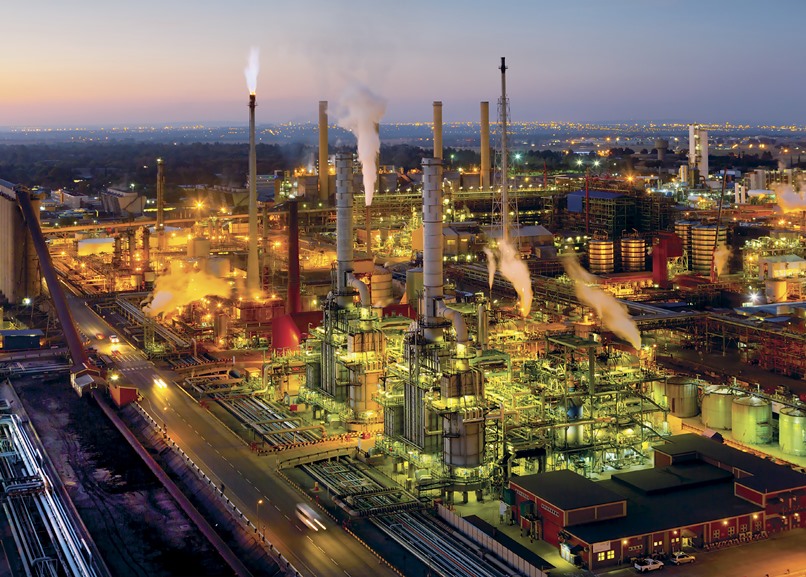A new national focus on gas, as a fuel to supply energy, will benefit the Free State. Sasol’s Sasolburg operations in the northern part of the Free State are a key national asset in the gas sector and there are early signs that there are large gas fields in the province.
Natural gas is an inexpensive alternative to coal. Although the coal is still powering most power stations in South Africa, it is a finite resource. Petroleum Agency SA is the state agency responsible for promoting and regulating exploration and production of oil and gas in the country.
Data suggests that the Free State has 23-billion cubic feet of gas underground, but only exploration can confirm this. If the gas is found in large quantities, then up to four new power stations could be built in the province.
Four applications for gas exploration in the Free State have recently been made. The two from Rhino Oil and Gas Exploration South Africa are part of a series of applications that the British Virgin Islands-based company has made across three provinces, “most of which”, according to the Mail & Guardian, have been granted. Rhino’s two Free State applications cover 2.8-million hectares. The other two are from Motuane Energy in the Lejweleputswa District Municipality (between Virginia and Senekal) and Sungu Sungu Gas in the Thabo Mofutsanyana District Municipality (south of Memel). Both applications have been opposed by farmers: Sungu Sungu withdrew its application before a High Court hearing in November 2016.
Sasol is doing its own conversions at its plants. The major economic sectors using gas are the metals sector and the chemical, pulp and paper sector. Brick and glass manufacturers are also big consumers.
A major investment by Afrox (a member of the Linde group) will see a R200-million plant built to extract helium, near Virginia. Renewable energy company Renergen owns the right to the natural gas and helium field around Virginia (which has proven reserves of 25-billion cubic feet). Afrox will operate the plant and sell the helium. Bus companies will buy another product which the plant will supply, compressed natural gas. This is a cheaper alternative than diesel.
Renergen’s natural gas subsidiary, Tetra4, has secured a R218-million loan from the Industrial Development Corporation to build a 107 km pipeline network from Virginia.
Afrox operates a CO2 liquefier at Sasolburg which supplies the bottling and hospitality markets, where demand is strong.
Alternatives
An energy-from-methane power plant now running at the Beatrix gold mine neatly encapsulates a shift from the old economy to the new. Although the Sibanye-owned gold mine still has significant reserves of the mineral, it is the shift to this new technology that is sparking interest and showing the way to creative energy solutions.
Sibanye’s predecessor as owner of the mine, Gold Fields, was the first gold miner to sell certified emissions reductions (carbon trading units) and now the mine is producing 2 MW of power for the mine’s operations. The Beatrix Project was registered as a
methane-gas-capture project with the United Nations Framework Convention on Climate Change (UNFCCC). Aggreko, a company that specialises in providing temporary power, is running the operation in partnership with Sibanye. During the 2010 FIFA World Cup in South Africa, Aggreko supplied 253 generators to stadiums and broadcast centres.
Oil
The Natref fuel refinery is one of only four in South Africa, and the country’s only inland refinery. It is strategically placed at Sasolburg near to the industrial hub of southern Gauteng. The petrochemical complex at Sasolburg is a major national asset. Among the many chemical, oil and gas companies operating out of Sasolburg are several companies within the Sasol group.
One of these, Sasol New Energy, has been working on moving the group away from reliance on fossil fuels. The resulting savings will improve Sasol’s profit margins, reduce carbon dioxide emissions and take pressure off the national electricity grid.
The Natref refinery is a joint venture between Sasol Oil (63.6%) and Total SA (36.3%). It is a technologically advanced facility, which refines heavy crude oil into petrol, diesel, commercial propane, jet fuel and bitumen. The capacity is 92 000 barrels per day. Between 60% and 70% of petroleum is distributed by pipeline, 20% to 25% by road and 5% by rail.
The products sold by Sasol Oil include both lead replacement and unleaded petrol, Sasol turbodiesel™, a range of lubricants, industrial fuel oils, illuminating paraffin and liquid petroleum gas, in addition to marine diesel oil and bitumen.
Contact
Department of Economic, Small Business Development, Tourism and Environmental Affairs
Physical address: Bojanala Building, 34 Markgraaff Street, Bloemfontein 9300
Tel: 086 110 2185 | Fax: +27 51 400 9593
Website: www.edtea.fs.gov.za
Online resources
- Liquefied Petroleum Gas Association of Southern Africa: www.lpgas.co.za
- National Department of Energy: www.energy.gov.za
- National Energy Regulator of South Africa: www.nersa.org.za
- Petroleum Agency SA: www.petroleumagencysa.com
- South African Oil and Gas Alliance: www.saoga.org.za
- Transnet Pipelines: www.transnet.net



